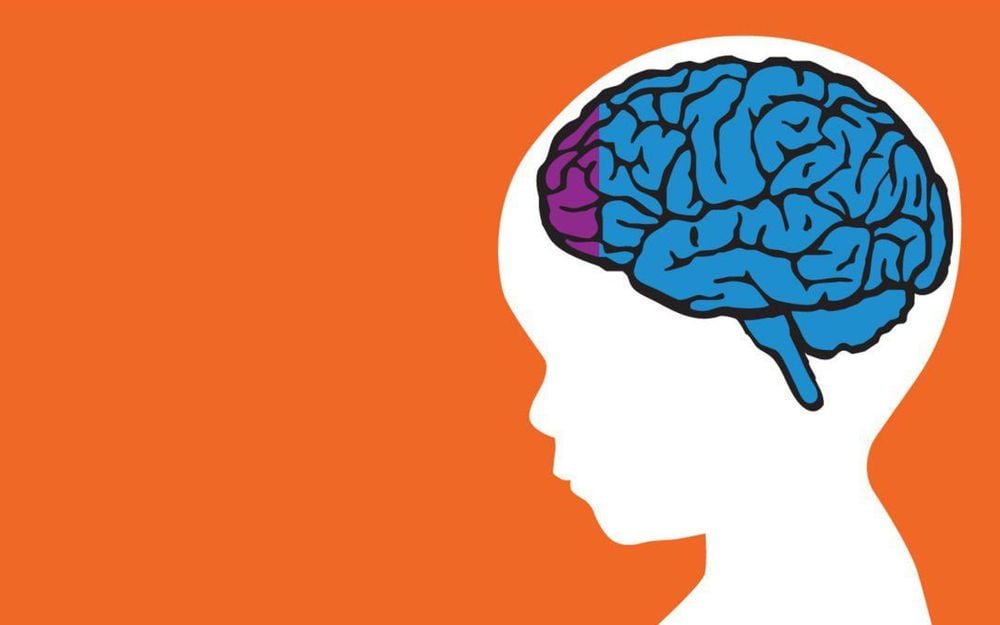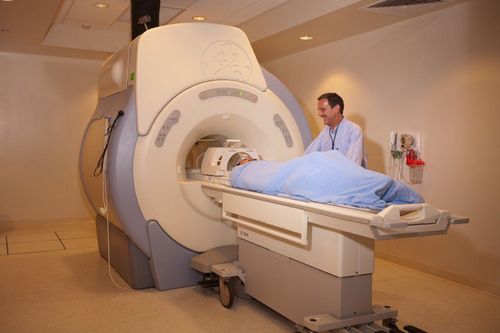This is an automatically translated article.
The article is professionally consulted by Master, Doctor Nguyen Minh Tuan - Pediatrician - Department of Pediatrics - Neonatology - Vinmec Danang International General Hospital.A baby's brain is made up of many parts, including different areas that manage emotions, logic, language, memory, behavior, and motor skills. While genes determine the structure of a child's brain, the network of connections between different regions of the brain grows stronger or weaker depending on the child's experience. To support the brain development of children, parents should first be supplemented with knowledge related to the lobes of the brain and their roles.
1. Frontal lobe
The frontal lobe of the brain, which corresponds to the part of the brain parenchyma located behind the forehead, has a major role in processing all automatic thoughts and behaviors such as walking, speaking, problem-solving, and some aspects of emotions. .Frontal lobe development in babies really takes place between 6 and 12 months of age, when your baby can begin to move and move, as well as communicate verbally. When the baby starts babbling, the left hemisphere of the baby's brain will light up thanks to the activation and when listening to a favorite lullaby, the right hemisphere of the baby will take control. For most people, language development is controlled by the left side of the brain, while the right side is responsible for interpreting the content and emotions of speech through its tone and rhythm.
The frontal lobe matures in stages and takes years to perfect. Its new functions are continuously added throughout childhood through the child's experiences. Children's brains are active during childhood, so they expend a lot of energy. It is estimated that half of the daily calories consumed by a 5-year-old child is used to fuel brain activities

2. Parietal lobe
The parietal lobe of the brain, located near the top of the head, is responsible for controlling taste, touch, object recognition, hand-eye coordination, and some visual recognition or comprehension. what is being seen.The development of the parietal lobe is largely determined by the stimulation of the external environment. When you give your baby new objects to play with and have a distinctive texture for her to touch and enjoy, you are directly stimulating development in the parietal lobe of her brain.
Although babies are often not exposed to a variety of foods (the American Academy of Pediatrics recommends that breast milk or formula be the only nutrition for babies for the first 6 months), studies show that found that children have a preference for sweets from the very first day. They also pout like adults when they taste sour.
3. Occipital lobe
The occipital lobe is the part of the brain near the back of the head that controls vision and visual perception, or the ability to understand what you're seeing. Sight is one of the most underdeveloped senses in children. In fact, babies are nearsighted and can only see as far as 20 to 40 centimeters. They can sense light, shapes, and movement, but all other features are still quite fuzzy.The neural pathways that transport visual information to the brain are also immature, so it is difficult for babies to understand what they are seeing.
To develop these pathways and the organs that control vision located in the occipital lobe, your baby needs to be able to see a variety of objects. During the first few weeks, the mother's face at close range when hugged will be very beautiful in the eyes of the baby. Research shows that babies prefer looking at people's faces over other objects. By the time your baby is one month old, any object you pass in front of your baby's eyes, especially those with bold contrasting colors, will catch her eye. With constant stimulation, your baby's eyesight will improve, and by about eight months of age, your baby should look as good as an adult.

4. Temporal lobe
The temporal lobe, named for its location because this part of the brain is located near the temple, controls hearing, smell, and the ability to understand language. The temporal lobes work together with the amygdala and hippocampus to enable people to learn, remember, and respond emotionally.Hearing is the first sense to fully develop in infancy. Within minutes of birth, a newborn will startle and cry at loud noises.
Research shows that the inner ear is the only sensory organ that is fully formed before birth. The inner ear reaches its mature size by mid-pregnancy.
The sense of smell also develops early in an infant's life. The researchers say that premature babies as young as 7 months old can respond to odors, meaning the tools needed to detect scents are still active even before birth.
Newborns respond to smells the first day they are born, their faces wince at unpleasant odors, like rotten eggs, and smile at the sweet aroma of sugary foods. By the end of the first week of life, breastfed babies will recognize and turn toward their own breast pads, ignoring pads from other nursing mothers.
5. Cerebellum
The cerebellum is the structure connecting the brain to the spinal cord, located at the back of the head near the nape, responsible for balance and coordination of movements of the muscles in the body. It's the area that allows your baby to develop motor skills, from rolling to crawling and then to walking.This area also coordinates other motor and sensory functions. In other words, it combines signals from all of your baby's senses to help him figure out his sense of balance as he moves around.
The cerebellum also helps with higher brain functions, such as learning music and language. Some experts believe that the cerebellum has an important role in helping children process social cues. In fact, studies show that abnormalities of the cerebellum play a part in causing autism (a developmental disorder related to communication and impaired social functioning).

6. Brain stem
The brain stem located at the tip of the spinal cord near the neck is the most developed brain region at birth. It controls all innate reflexes, such as crying, startle, and suckling reflexes, and regulates basic life functions such as breathing, blood pressure, heart rate, and digestion.The brainstem works with the amygdala - the emotional center of the brain - to process your baby's emotions, especially anxiety, or otherwise to help calm him down in certain situations. Areas of the brain that control emotions mature early in life and are very sensitive when responding to parents.
Marian Diamond, PhD, a pioneering brain researcher, writes in her book Magic Trees of the Mind that parental patience, focus, and understanding are the keys to helping your child grow in a healthy way. Strong in processing emotions. Holding and comforting babies when they cry, especially during the first year of life, will help them develop self-calming abilities later in life.
For young children, it is very easy to get respiratory diseases, respiratory infections and gastrointestinal infections if the baby eats solid foods early or the storage and preparation of milk is not guaranteed. To protect children's health, parents should do well to exclusively breastfeed their babies for the first 6 months (if possible) and vaccinate on schedule. As soon as the child shows symptoms such as anorexia, fatigue, crying, it is necessary to take the child to the hospital to be consulted by a specialist for monitoring and treatment. The pediatric department at Vinmec International General Hospital is the address for receiving and examining diseases that infants and young children are susceptible to: viral fever, bacterial fever, otitis media, pneumonia in children. With a system of facilities, modern medical equipment, sterile space, minimizing the impact as well as the risk of disease spread, Vinmec will bring satisfaction to customers. and is highly appreciated by industry experts with:
Gathering a team of leading pediatricians: including leading experts with high professional qualifications (professors, associate professors, doctors, Master's degree), experienced, worked at major hospitals such as Bach Mai, 108.. The doctors are all well-trained, professional, conscientious, knowledgeable about young psychology. Besides domestic pediatricians, the Department of Pediatrics also has the participation of foreign experts (Japan, Singapore, Australia, USA) who are always pioneers in applying the latest and most effective treatment regimens. . Comprehensive services: In the field of Pediatrics, Vinmec provides a series of continuous medical examination and treatment services from Newborn to Pediatric and Vaccine,... according to international standards to help parents take care of their baby's health from birth to childhood. Advanced techniques: Vinmec has successfully deployed many specialized techniques to make the treatment of difficult diseases in Pediatrics more effective: neurosurgery - skull surgery, stem cell transplantation blood in cancer treatment. Professional care: In addition to understanding children's psychology, Vinmec also pays special attention to the children's play space, helping them to play comfortably and get used to the hospital's environment, cooperate in treatment, improve the efficiency of medical treatment.
Please dial HOTLINE for more information or register for an appointment HERE. Download MyVinmec app to make appointments faster and to manage your bookings easily.
Reference source: babycenter.com













